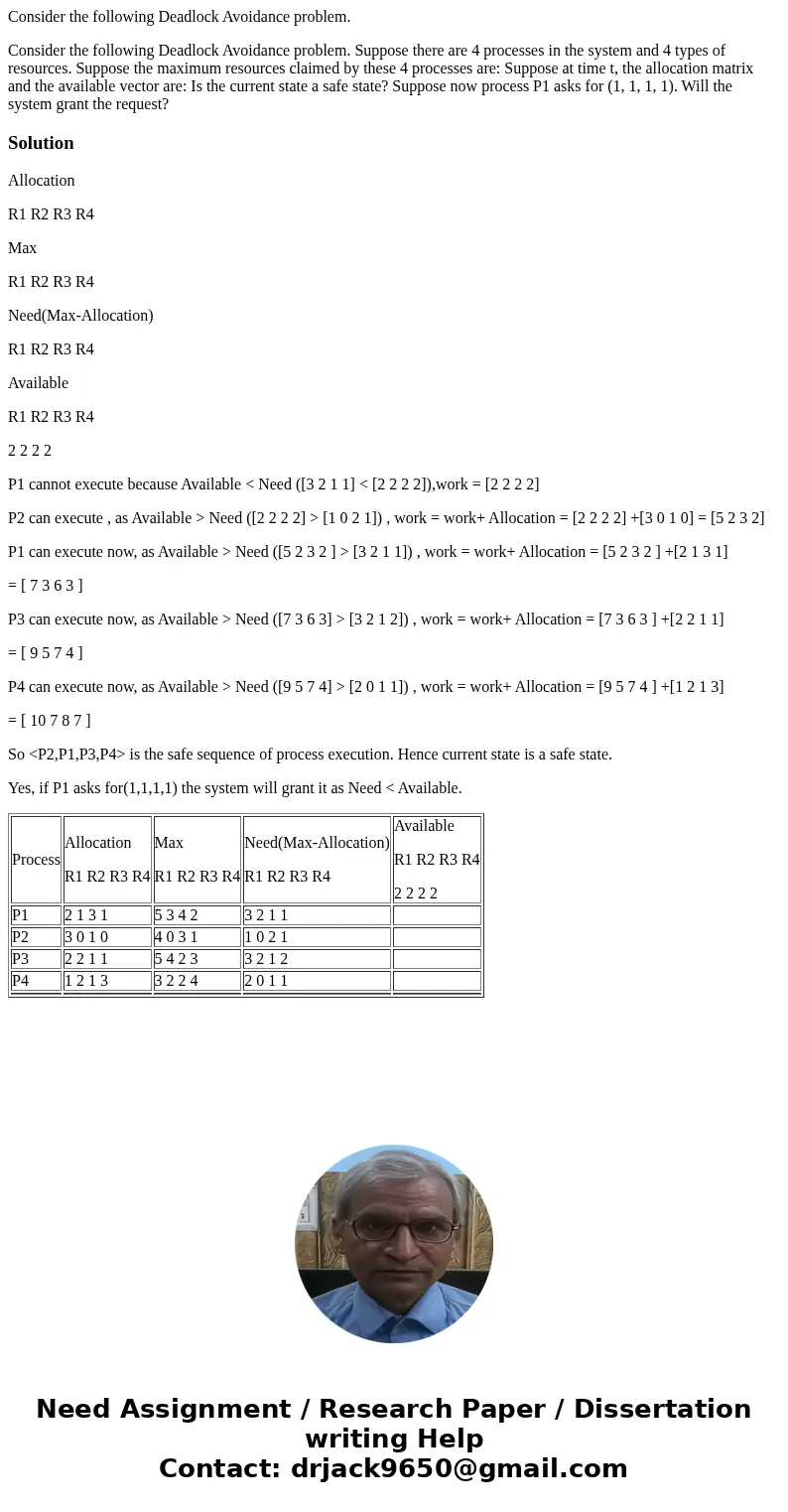Consider the following Deadlock Avoidance problem Consider t
Consider the following Deadlock Avoidance problem.
Consider the following Deadlock Avoidance problem. Suppose there are 4 processes in the system and 4 types of resources. Suppose the maximum resources claimed by these 4 processes are: Suppose at time t, the allocation matrix and the available vector are: Is the current state a safe state? Suppose now process P1 asks for (1, 1, 1, 1). Will the system grant the request?Solution
Allocation
R1 R2 R3 R4
Max
R1 R2 R3 R4
Need(Max-Allocation)
R1 R2 R3 R4
Available
R1 R2 R3 R4
2 2 2 2
P1 cannot execute because Available < Need ([3 2 1 1] < [2 2 2 2]),work = [2 2 2 2]
P2 can execute , as Available > Need ([2 2 2 2] > [1 0 2 1]) , work = work+ Allocation = [2 2 2 2] +[3 0 1 0] = [5 2 3 2]
P1 can execute now, as Available > Need ([5 2 3 2 ] > [3 2 1 1]) , work = work+ Allocation = [5 2 3 2 ] +[2 1 3 1]
= [ 7 3 6 3 ]
P3 can execute now, as Available > Need ([7 3 6 3] > [3 2 1 2]) , work = work+ Allocation = [7 3 6 3 ] +[2 2 1 1]
= [ 9 5 7 4 ]
P4 can execute now, as Available > Need ([9 5 7 4] > [2 0 1 1]) , work = work+ Allocation = [9 5 7 4 ] +[1 2 1 3]
= [ 10 7 8 7 ]
So <P2,P1,P3,P4> is the safe sequence of process execution. Hence current state is a safe state.
Yes, if P1 asks for(1,1,1,1) the system will grant it as Need < Available.
| Process | Allocation R1 R2 R3 R4 | Max R1 R2 R3 R4 | Need(Max-Allocation) R1 R2 R3 R4 | Available R1 R2 R3 R4 2 2 2 2 |
| P1 | 2 1 3 1 | 5 3 4 2 | 3 2 1 1 | |
| P2 | 3 0 1 0 | 4 0 3 1 | 1 0 2 1 | |
| P3 | 2 2 1 1 | 5 4 2 3 | 3 2 1 2 | |
| P4 | 1 2 1 3 | 3 2 2 4 | 2 0 1 1 | |

 Homework Sourse
Homework Sourse